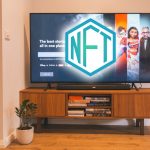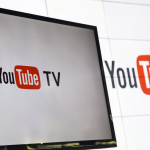Disruptions are everywhere. People are looking for ‘pain points’ in daily life and try to disrupt it by providing a better solutions. We could see media industry has been disrupted rapidly and some traditional media, like TV, is deemed to be fading out from our life.
Provided that Television has been with human beings for around 90 years (since its invention), there seems to be some irreplaceable value in it. What we just need is a new TV experience. On-demand video services like Netflix has provided one of the ways for it. And, in my upcoming articles, we would like to cover the other way: the Curated Online Videos as TV Channels. (Or say, the video “Flipboard” on TV)
So why there seems to be a sweet spot? Here are some points:
Equilibrium (if not Monopoly) of TV industry
We could see, for many countries or regions, the TV broadcasters, operators have a strong position in keeping their walled garden. Some of the countries only have one TV broadcasters and a few choices of cable / IPTV operators. The TV companies in those countries do not need to have any incentive to bring in innovation or new idea to maintain their survival.
The TV industry is in equilibrium until Netflix, and other OTT service providers, kick-in recently and save part-of the TV experience. However, for other timely contents like News and live events, the audience still do not have much choices and they tend to look for contents on other platform, like Facebook.
Audience behavior changed (and not changed)
Audience may still rely on big TV screen for movies and dramas. But they tend to rely on other small screen for other types of contents like News, Music and other non-fictional contents (e.g. info related to their hobbies).
As there are a few channels and limited contents offered by the few TV companies, audience couldn’t get access to content at the time they want. For example, when a user want to watch the news, they may not want to wait for a news break in every hour but they tend to look it up on their phone. Audience tend to “lean-in” and look for the contents on their own.
However, Audience would not always know what they want to watch and know the “keyword” to actively search on internet. They still want to “lean-back” and get pushed with content from categories / topics they like. For example, one may want to watch some cooking class program but they may not know what dishes they actually want to learn. In this case, if they could tune in to a “channel” (i.e. a stream / a list of cooking related contents from various YouTube Channel and Facebook Page), it would be a good start for them. News content is another example, you could not know what is happening and type in the keyword to search for it, so you need to be “pushed”.
Lean-back experience is still needed but typical TV channels are so constrained to catered a variety of needs from audience.

Who want to look up for new videos by clicking the apps one by one?
The Emerge of Fragmented Contents
With the TV industry staying stable (relatively), the other media industries are being disrupted rapidly. Lots of online media emerged and each of them is experimenting to serve the content in different ways. Many newspapers, magazines are putting video contents on their social media site to bring in traffic.
Participatory media emerges recently and they become the major media sources for the teenagers nowadays. Many YouTubers could get a higher impression than typical TV programs.
Millions of videos are being produced everyday and they are fragmented, short in length and scattered. In order to help the audience to efficiently get accessed to all of them, a good curation service of videos is needed.
“App” is for phone, not TV
One may saying that, Smart TV has been into market for more than 6 years, if online video curation is the way to go, why there hasn’t been a “killer app” yet?
We could see there are thousands of video apps on the TV app stores and each of them process a small amount of video contents (except those popular giant like Netflix, Amazon Videos…etc) and they doesn’t have content updated frequently. It is not likely for TV audience to grab the TV remote and browse the applications one by one for interesting content. The “App” concept is made for mobile phone and tablet, which users could have seamless interaction, rather than for TV.
One may argue that, YouTube TV application used to be on Smart TV. Why it hasn’t brought about the new trend?
The YouTube application on Smart TV hasn’t been improved for a while and its user experience design is simply a replication of its mobile/web application. The application records the watch history of users and recommend similar videos on the landing screen and after each video playback. The UX design may be good for personal phones. However, one may not want to have their watch history to be shown on the big screen in family’s living room and audience always find the clips recommended to them is irrelevant. Some are out-dated, some are too long and boring, and some are simply off-topic. A proper curated process is needed and the audience should be provided with a thematic playlists of contents, just like the TV channels, to tune in. It is expected that there should be an aggregator to serve the content like “portal” in the early days of internet, rather than “app”.

Do you want to have your watch history shown on your family TV and get recommendation related to it?
In the next article(s), we will discuss about the feasibility and potential difficulties on curating content on the Smart TV devices.





Comments by Cheung Chun Ho